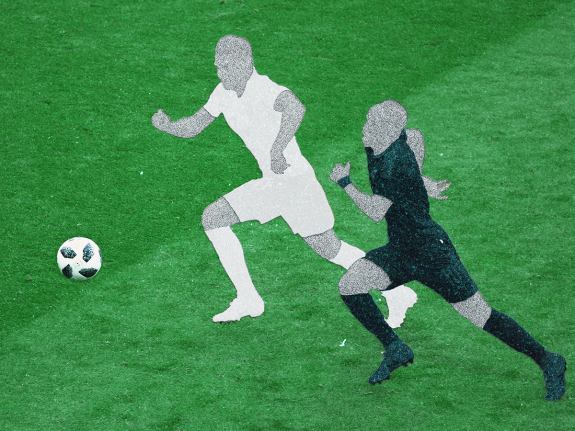Proving endemic racism and sexism in the world of football
Anyone who follows football will perhaps be disappointed yet unsurprised that racism and sexism continue to be part of the beautiful game.
This study is clever in the way that it shows that those watching football matches use coded language and are biased against women. Hopefully, it will help all of us figure out better ways forward.
(I actually really enjoy watching women’s football with my family!)
The resulting paper, “Pace and Power: Removing unconscious bias from soccer broadcasts,” caused a stir when they presented it at last month’s New England Symposium on Statistics in Sports. Of the 47 sports fans who watched a two-minute clip of the World Cup TV broadcast, 70 percent said that Senegal, whose players were all Black, was “more athletic or quick.” But of 58 others who saw an animation of the same two minutes without knowing which teams they were watching, 62 percent picked Poland, whose players were all white, as the more athletic side.1 The physical advantages that supposedly defined the African team’s style of play disappeared as soon as their skin color did.Interestingly, they also looked at gender as well as race:[…]
The athleticism flip-flop offers a new kind of evidence of a prejudice that affects how Black players of every nationality are perceived. For decades, researchers have documented media stereotypes of African players as “‘powerful,’ ‘big-thighed,’ ‘lithe of body,’ ‘big,’ ‘explosive,’ and like ‘lightning,’ attributes that were to be contrasted with ‘the know-how that England possess.’” As Belgian forward Romelu Lukaku, who is Black, told The New York Times, “It is never about my skill when I am compared to other strikers.” Now, for the first time, researchers have a way to isolate how race influences direct perceptions of the game.
The study also examined attitudes toward gender by showing viewers a pair of two-minute clips, one from the American top-flight National Women’s Soccer League and another from League Two, the English men’s fourth tier. Even though the NWSL draws more fans to games, its average player earns about a quarter as much as the average player in League Two. Gregory and Pleuler were curious whether this “clear gender pay gap” could be explained by a difference in the quality of the soccer shown on TV, as some have argued.Source: Soccer Looks Different When You Can’t See Who’s Playing | FiveThirtyEightPeople who watched the broadcasts said that the men’s game was “higher quality” by a 57 percent to 43 percent margin. Those who saw the renders with genderless stick figures preferred the women’s match, 59 percent to 41 percent. The results weren’t statistically significant across a small sample of 105 mostly male respondents, but Pleuler believes the line of research is promising. “I think these results are suggestive that your average soccer fan can’t tell the difference between something that does have a large investment level and the women’s game, which does not,” he said.
